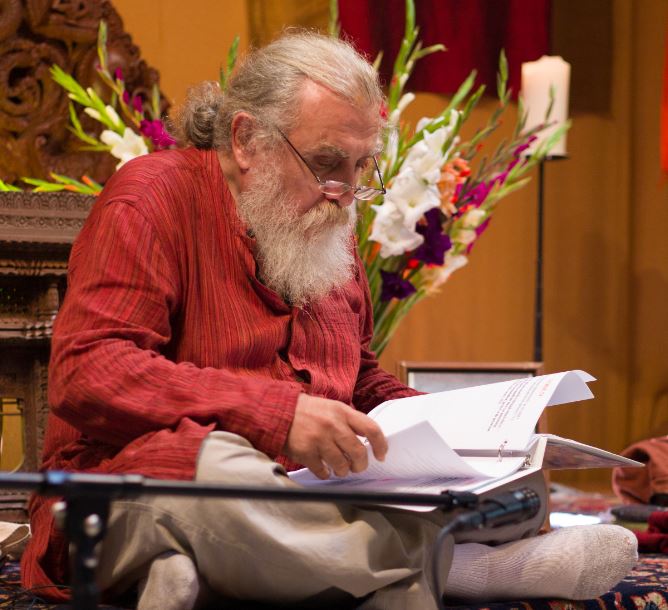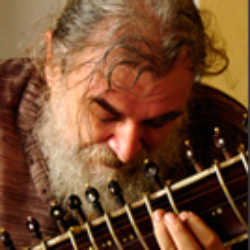Ātmārthapūjāpaddhatiḥ
Also called the Ātmārthapūjāpaddhatiḥ, the Varuṇapaddhati is one of the most detailed and yet compact works on Siddhānta ritual and practice. Varuṇaśivācārya, composed this liturgical work culling from major Śaivasiddhāntāgamas. He refers at the beginning to many of the greatest Siddhāntācāryas and draws from their works extensively.
Format:
Velthius
Unicode
Devanagari
Abhidhārthacintāmani
Format:
Velthius
Unicode
Devanagari
Aghorārcanavidhi
The Aghorāranavidhi is a Nepalese liturgical tract concerning the worship of Aghora who is the southern face of Sadāśiva’s five faces that are worshipped first. The depositions (nyāsa) on the hands and body are taught, as usual, and related rites to prepare for the japa of the Aghora Mantra as taught in the Svacchandatantra. Indeed, Aghora is Lalitasvacchanda Bhairava, the consort of Kubjikā who is worshipped with her mantras for her limbs and faces and her entourage, the eight Mārṛkās etc for much of the rest of the liturgy.
Format:
Velthius
Unicode
Devanagari
Ajadapramātrisiddhi
Format:
Velthius
Unicode
Devanagari
Ajitāgama
Format:
Velthius
Unicode
Devanagari- vol 1
Devanagari- vol 2
Akulāgamatantra
Format:
Velthius
Unicode
Devanagari
Amrtīsavidhāna
Although the name of this tract – Amṛtīśavidhāna (the Procedure of the Lord who renders Immortal) – suggests that it is just a liturgical manual. However, it is presented in the standard form of a Tantra set in ślokas. The colophons present it as a ‘compendium of the essence of all the currents (of scripture)’ and so has no specific affiliation. Even so this is clearly a Tantra dedicated to the cult of Mṛtyuñajaya also called Amṛtīśa (or Amṛteśa) Bhairava of which the Netratantra is the prime authority.
Format:
Velthius
Unicode
Devanagari
Anubhavasūtram
Format:
Velthius
Unicode
Devanagari
Anuttarāstikā
Format:
Velthius
Unicode
Devanagari
Aparājitāa
Aṃśumatkāśyapāgamaḥ
Bhairavāgnihomavidhi
Bhavānīsahasranāmastotra
The Bhāvanīsahasranāmastavarāja is the King of Hymns of the Thousand names of Bhāvanī. Bhāvanī is closely identified with Durgā. This is clear by a large number of names they share in common such as Nārāyaṇī Yoganidrā and Kātyāyanī. She also has strong Vaiṣṇava associations. Her Buddhist names such as Prajñāpāramitā, Prajñā and Tārā (2/11) suggest that the hymn was composed in a place and time where and when the influence of Buddhism was still felt. She is a mild goddess, similar to Sarasvatī, with whom she is identified (2/13). But even so she is linked to the Mothers – mātṛkā – who are worshipped extensively in the later period in Kaula orientated cults. The hymn presents itself as a part of the Rudrayāmala. It is not surprising that there is no trace of it in the recovered text of the Rudrayāmala. A very large number of such works ascribe themselves to this Tantra to benefit from its authority. This practice became very common from about the 14th century onwards. The following work is a hymn to Indrākṣī. As with Bhāvanī a visualization is supplied that would be of interest to iconographers.
Bhāvanopaniṣat
Bhuvanamālinīkalpa
Bijanighaṇṭu
Cchummasaṅketaprakāśa
Devikālottarāgama
Dhvanyāloka
Prathamodyotaḥ
Dvitīyodyotaḥ
Tṛtīyodyotaḥ
Dhyānaslasaṃgrahaḥ
The first part of this text is, as its title suggests, as collection of visualizations of deities drawn from various sources which are, unfortunately not named but can safely be assumed to be Āgamas prevalent in South India. Indeed, a good number of the deities have Tamil names. This text should be of special interest to iconographers especially of South Indian deities. (p. 1-42) The second text called by Paramānanda Yogi who tells us he was the disciple of Jñānācārya who lived in Kāñcīpura.
Durgāsaptaśatī
Ekākṣarakosha
Gāyatrītantram
Gandharvatantram
Velthius
Unicode
Devanagari
Devanagari original
Gaurīkāñcalikātantram
The Gaurīka tantra belongs to a class of Tantras, concerned with potions and spells for to cure illness. These include remedies for piles and cough, as well as fear. They also serve for the acquisition of powers. The most well-known Tantra of this sort is the published Ākāśabhairavakalpa. This work, as that one, consists of numerous procedures and prescriptions called ‘Kalpas’. These include the manner of preparation of herbs with mantras and the invocation of the appropriate deities to obtain thereby various benefits. and the including yogic ones. The text also supplies methods of prognostication based on signs and omens, include signs of impending death. These are not only external but also include bodily one such as the spontaneous throbbing (spandana) of parts of the body.
Gheranda-Samhita
Haṃsabheda
Hariharastotra of Vasudeva
The Hariharastotra – A Hymn to Visṇu and Śiva – is by a certain Kashmiri paṇḍit by the name of Vasudeva. It is in praise of the two deities together, Viṣṇu often being addressed as Kṛṣṇa. It is not quoted by early śaiva teachers and gives the impression of being a relatively recent work. It followed by the Svātmadevastotra and the Brāhmī Vidyā all by the same author who adds his own commentary to the latter.
Indrajālavidyāsaṃgraha
Jnāanayogasāraḥ
The Jñānayogasāra is set in the form of a dialogue between the goddess and her consort the lord (īśvara) also called Umā and Maheśvara, respectively and so is a Tantra. As the title suggests – the Essence of the Yoga of Knowledge – the text is concerned with Yoga. Indeed, one colophon charterizes it as mahāyoga – a great essence of Yoga. Unfortunately, this is just a fragment extending from chapter 22 to 25. This work is of interest to specialists in Yoga. The emphasis here, as is commonly the case in such yogic works, is the attainment of a state beyond mind of the Transmental – unmanī, or Mind Beyond Mind – manonmanī. The practice of Khecarīmudrā is described to this end in chapter 23. This involves the pressuring of points in the body and the attention to the flow of the breath in order to lead it upwards through suṣumṇā. Chapter 24 teaches how lunar nectar flows down from the center of palate down to the sun that shines in the navel. Conversely, the upward movement to the End of the Twelve above the head also takes place. The reference to this center which is at the extremity of the subtle body at a distance of twelve finger widths above the body, suggests that this is possible a relatively early work of medieval Yoga. This is because from the 14th century or so onwards the Thousand Petal Lotus in the cranium came to be the highest point of ascent. This was most probably for fear of possible death.
Kālasaṃkarṣiṇīmatam
Śrīkālīvilāsatantram
Kamalānāmnī srītripurasundarī paddhatiḥ
Kamkālamālinītantra
Karavīrayāga
Kashmiri paddhatiḥ
Kasyapa Samhita
Laghustavaṭīkā
Śrī Lalitāstavaratnam
Śrī Lalitāmahātripurasundarī
Mṛtyujidamṛtesavidhānam

